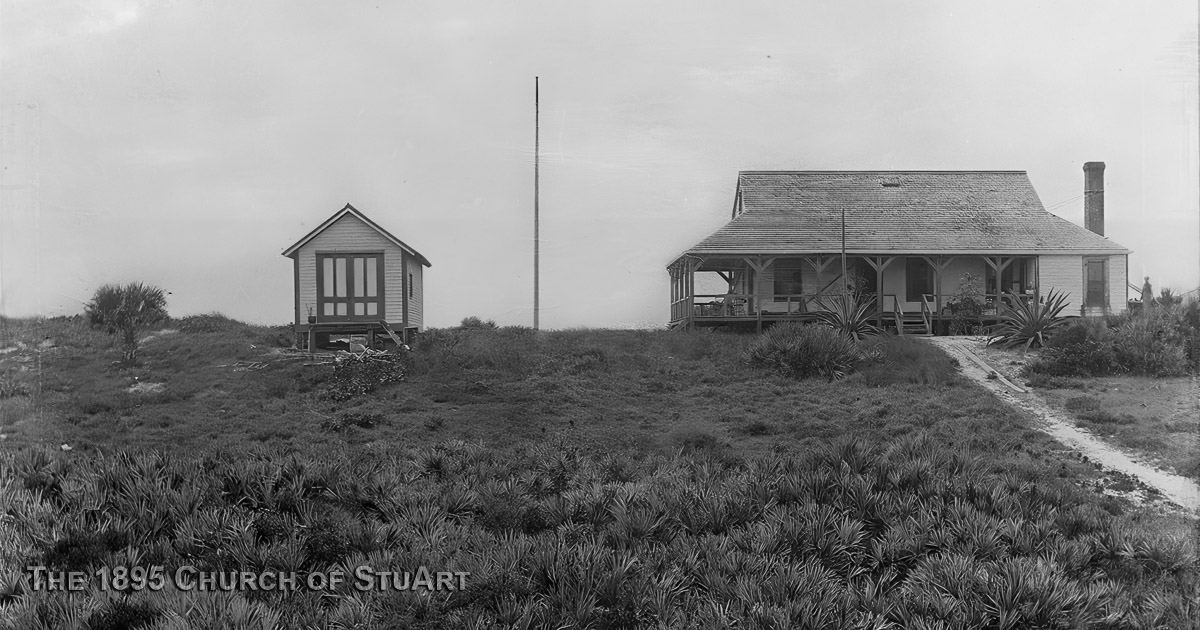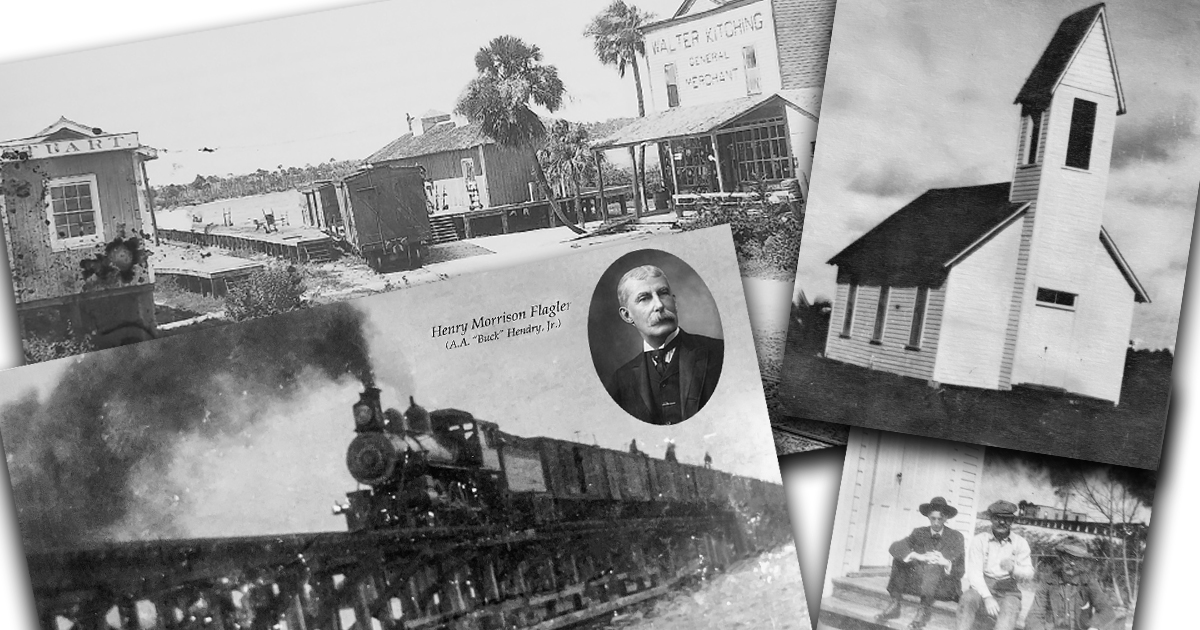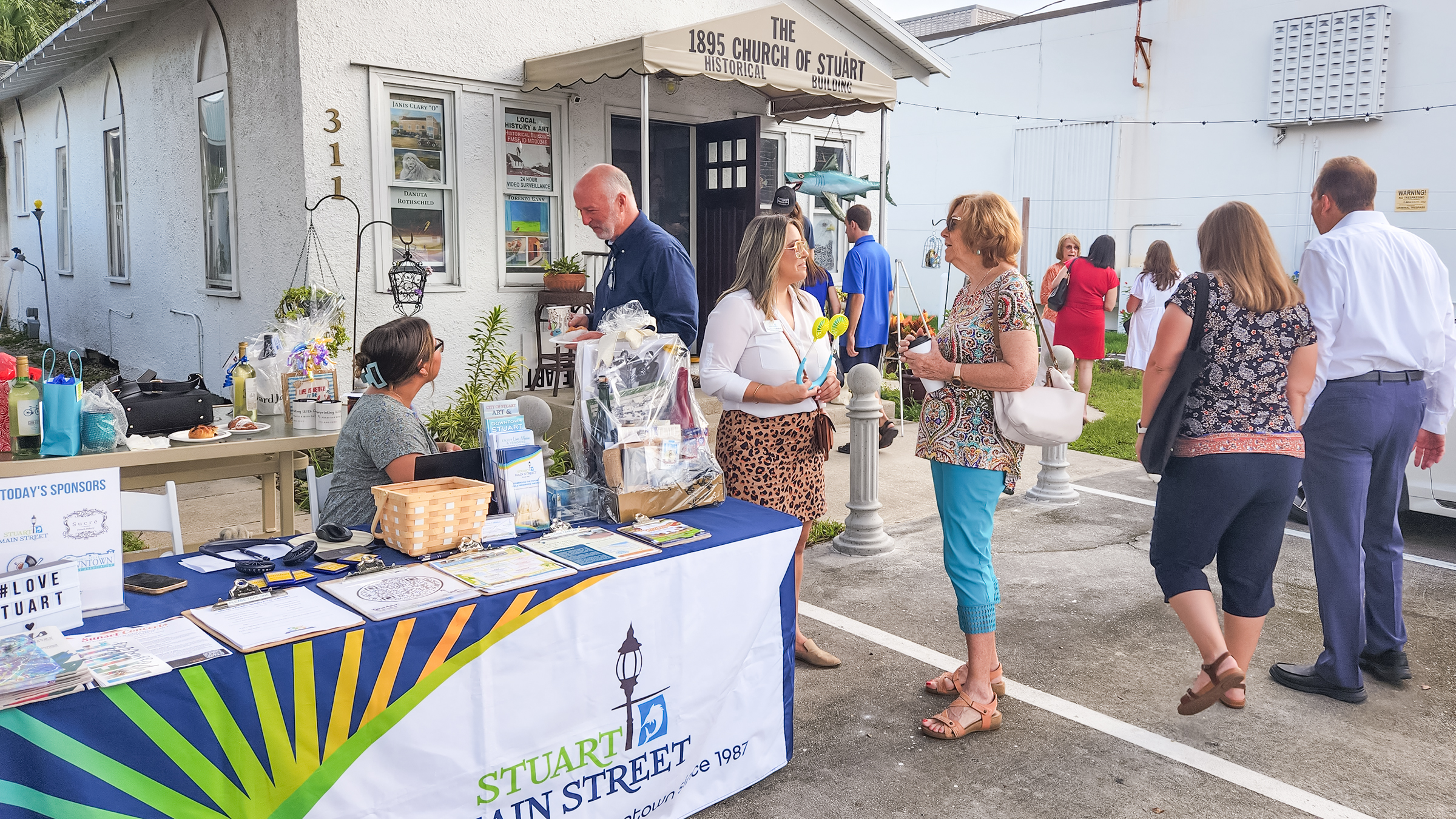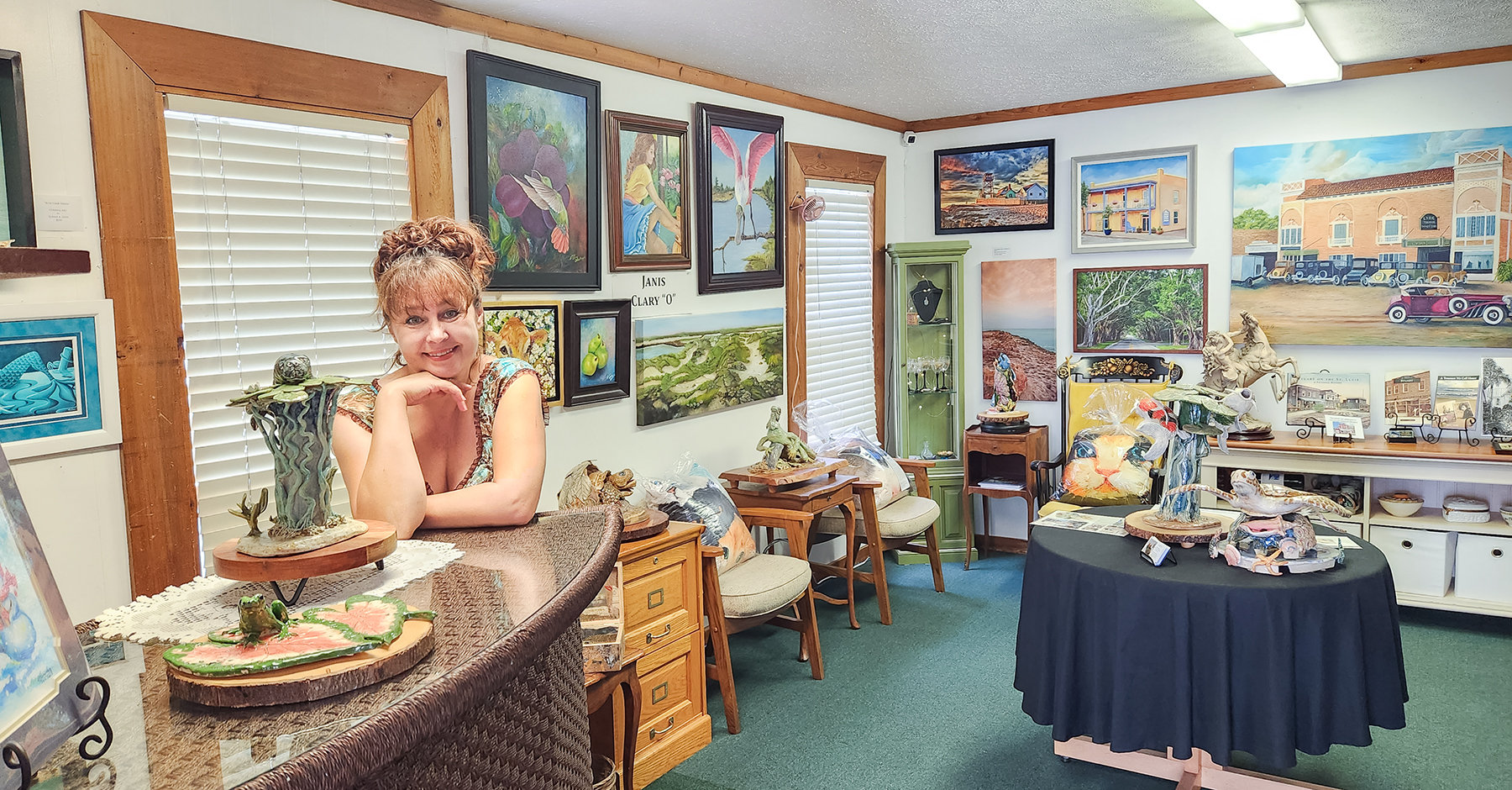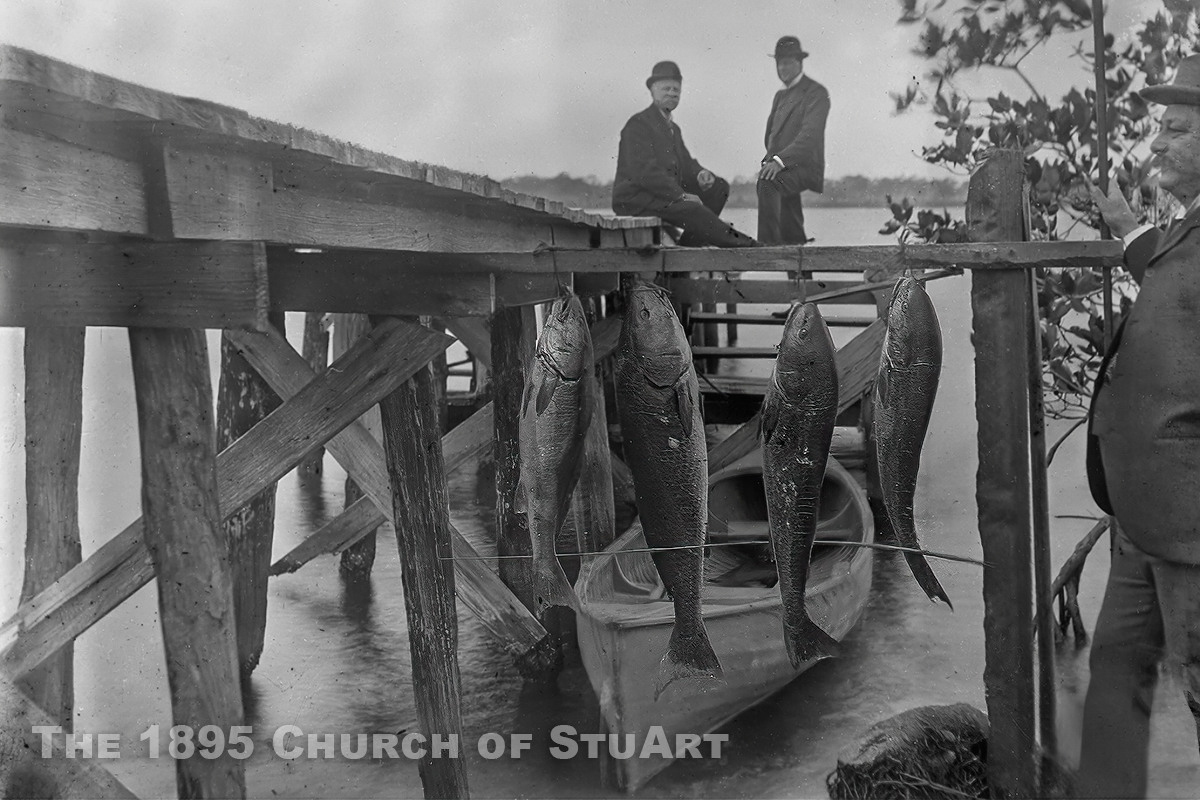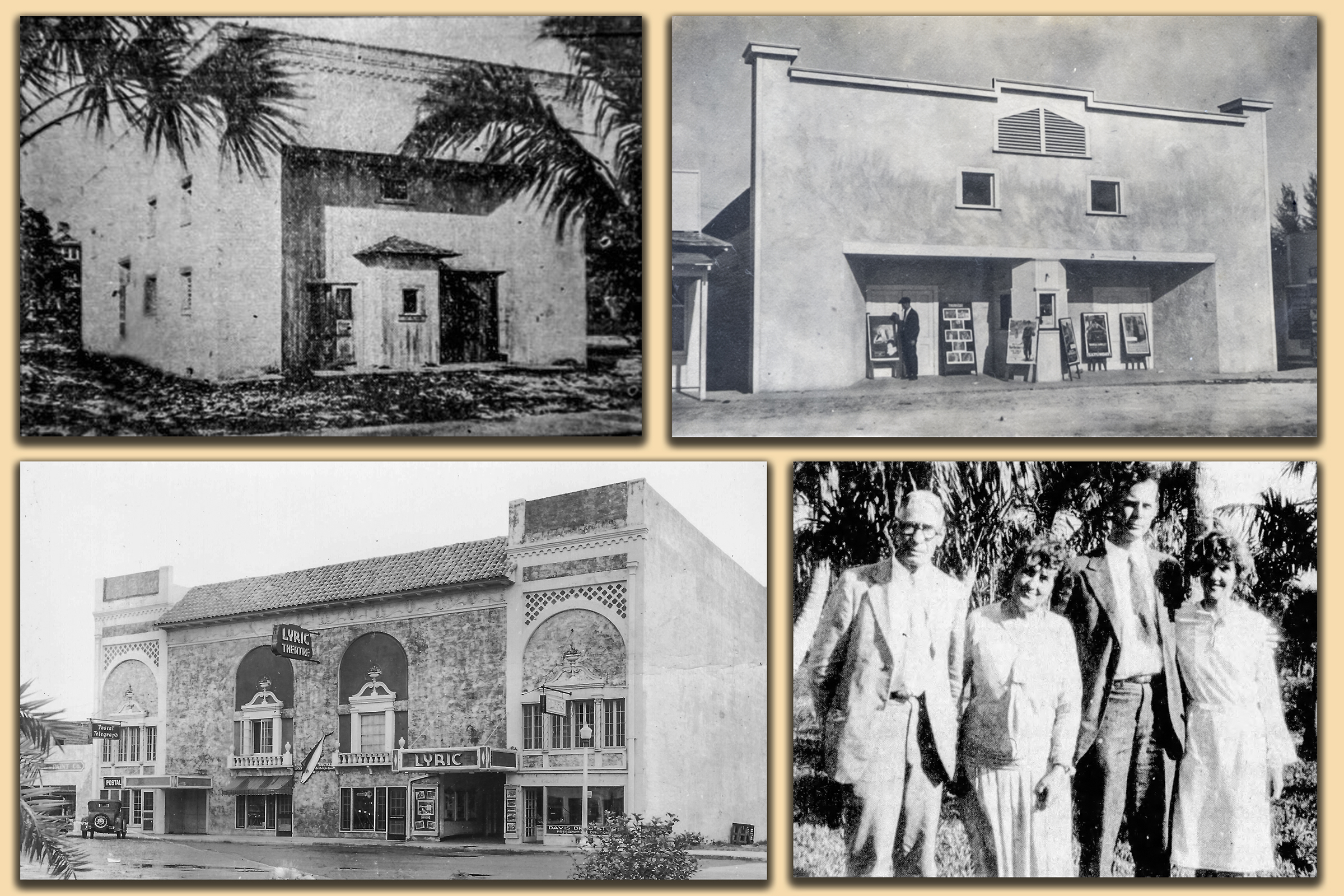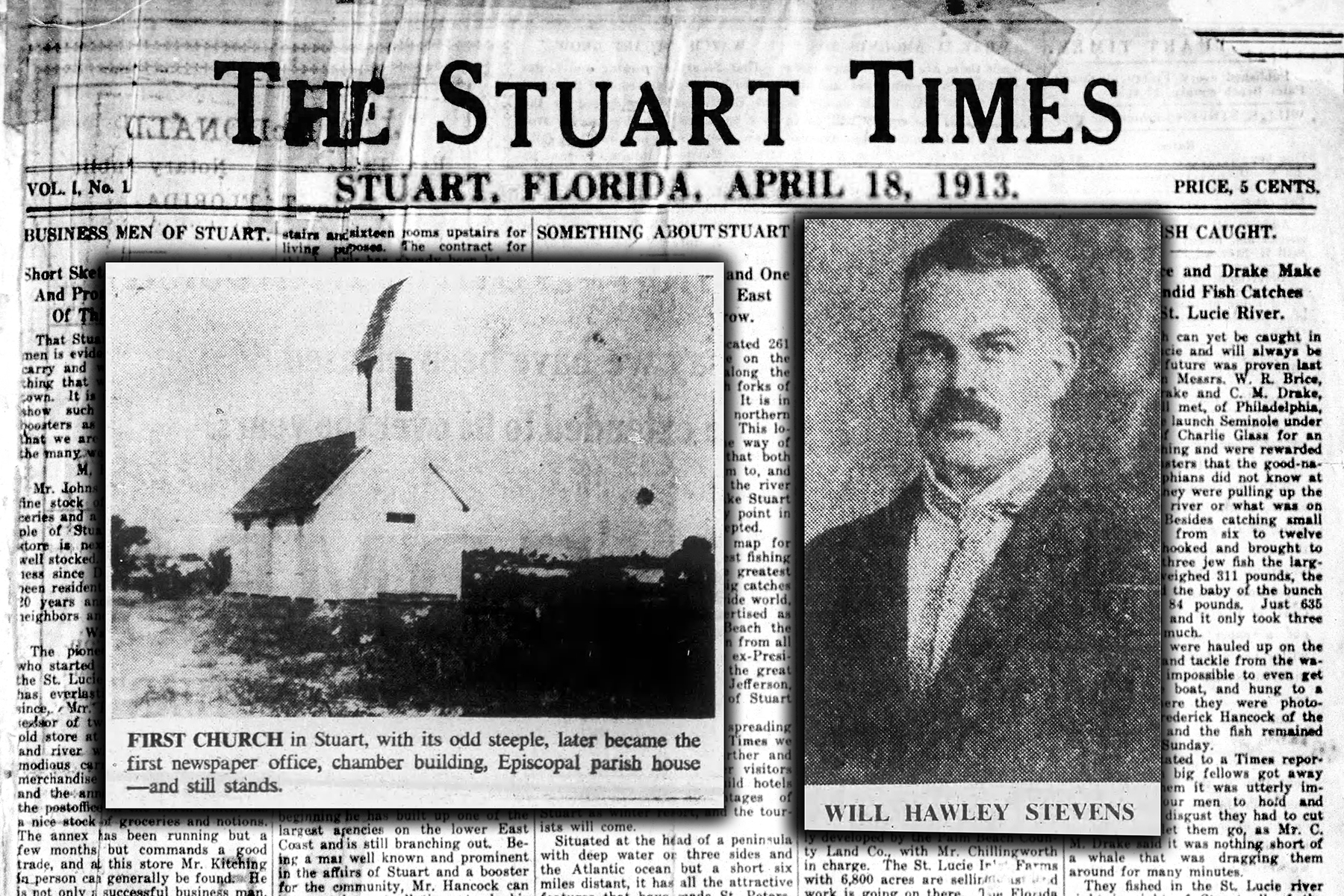In April of 1913, The Stuart Times published, “Among the new enterprises now being contemplated for Stuart is an up-to-date theatre, with full stage settings, motion picture equipment, electric lighted, etc. The building will be constructed of concrete blocks, two stories high, with two store rooms on the first floor – front of the building, and two office rooms on the second floor – front. The main auditorium will be 40 feet square, with a sitting capacity of 250. The stage will be 40 feet wide and 20 feet depth…” There were only about 300 people in the town in 1913.
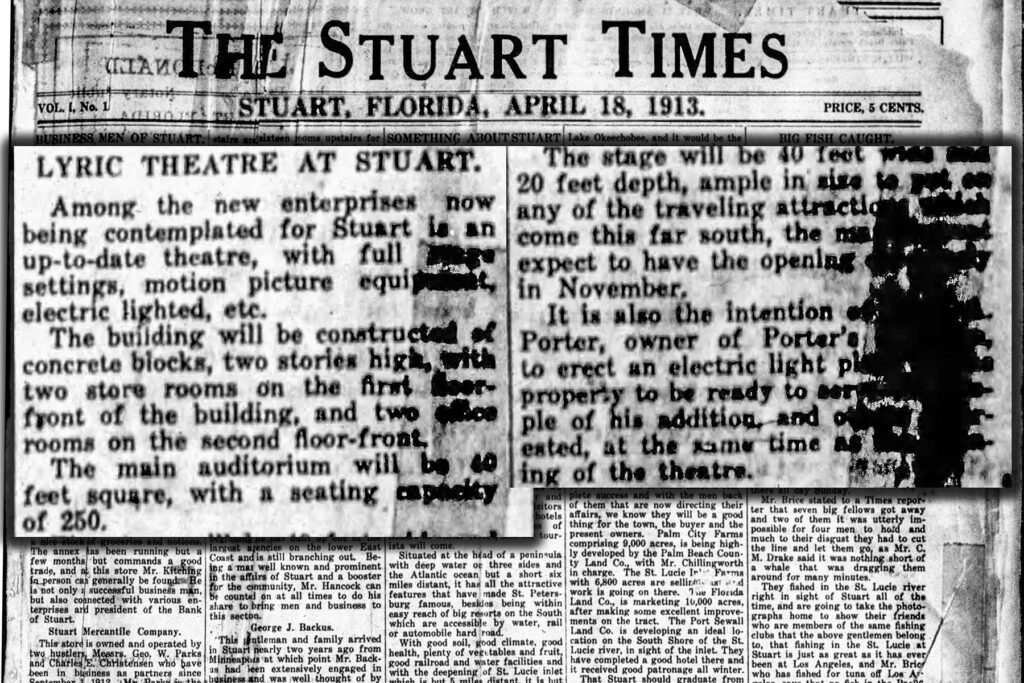
The opening of “the most attractive and convenient theatres on the coast” erected by Judge Hancock in Stuart, took place on Tuesday night, May 5th of 1914. There was no electricity in Stuart, so Hancock had his own power generator installed. The ticket prices were 10 cents for adults and 5 cents for children.
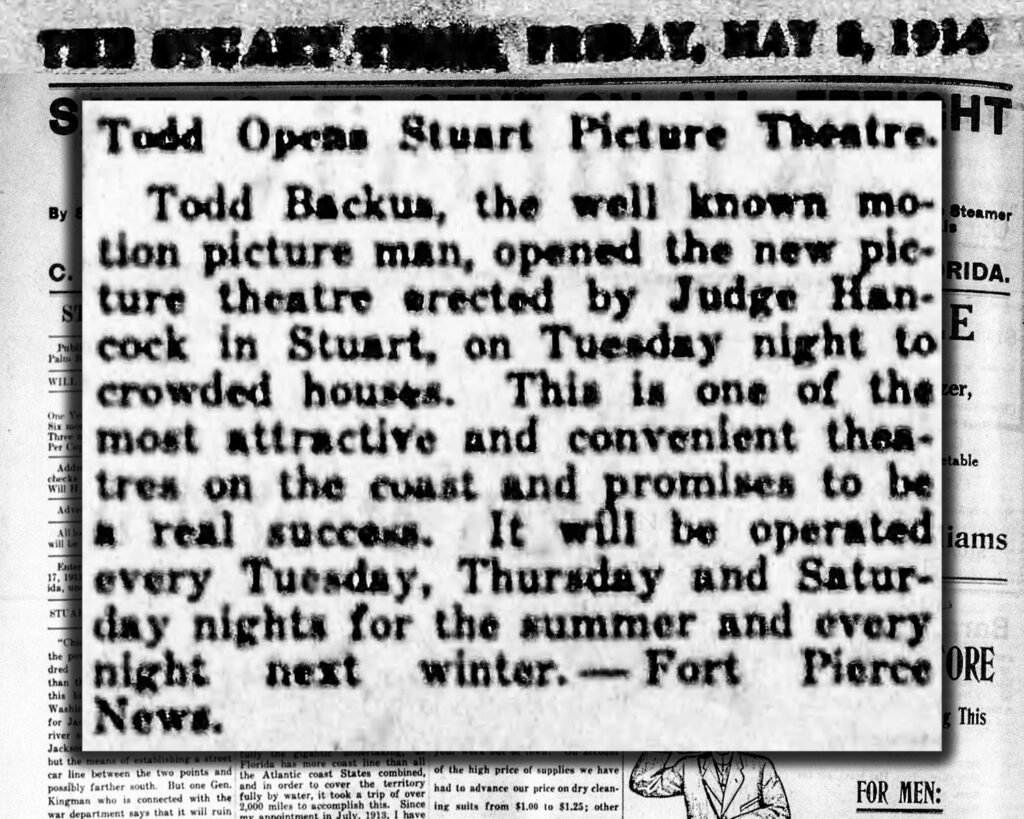
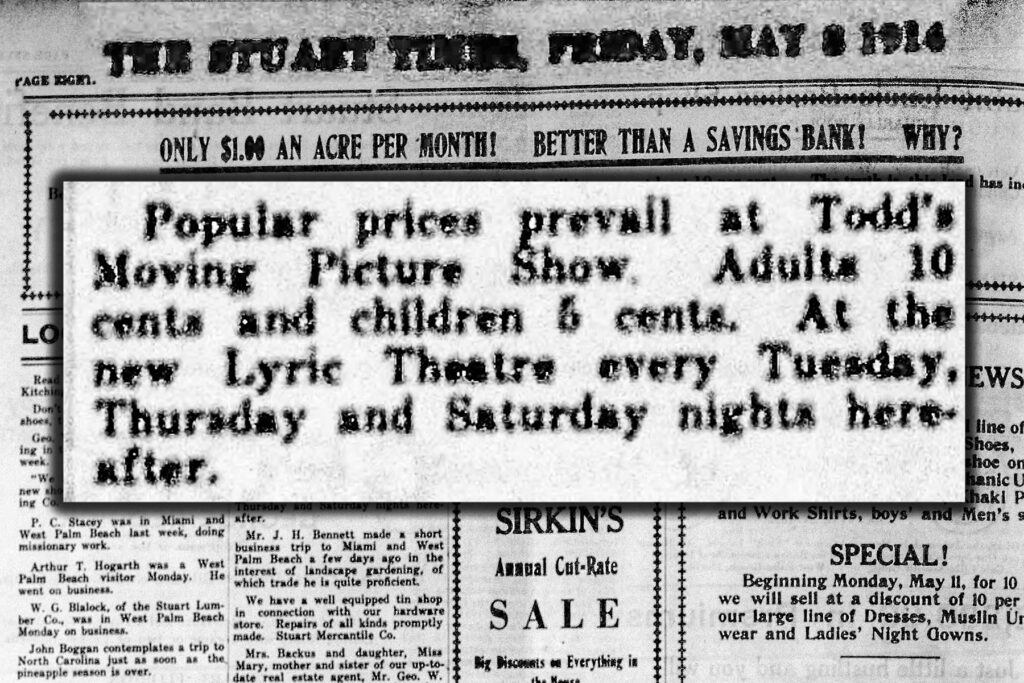
By Alice & Greg Luckhardt
Hancock family patriarch John C., born in Greencastle, Indiana, October 28, 1857, with wife, Mamie and only child, Fred, moved to Stuart from Illinois in 1902.
Mamie (Lentz) was born Sept. 15, 1867 in Zanesville, Ohio and son, Charles Fred, Jan. 16, 1894 in Illinois.
The young Hancocks decided in the early years of the twentieth century to grow pineapples in sunny Stuart, Florida.

To supplement income, John would also be employed as a salesman for the Truman Fertilizer Co. in Jacksonville.
In the ensuing years, John was not satisfied with profits from the farming venture, as the pineapple business slumped to near disastrous by 1912.
John had contacts in North Florida and acquired a chain of three theaters in the vicinity of Jacksonville, while retaining the homestead in Stuart.
By 1914, the ambitious, industrious Hancock had not only built Stuart’s first theater, the Lyric on Osceola, but sold real estate and insurance.

Mamie would soon be involved in the operations of the theater, as she provided musical accompaniment on piano, and eventually on the organ for the silent movies. She also offered music lessons in the community.

There being no fully accredited high school in Stuart, Fred attended the Porter and Suwanee Military Academies, joining the family in the theater enterprise after graduation.
Tall, slender Fred, with blue eyes and dark brown hair, was the manager and an early projectionist at the Lyric.
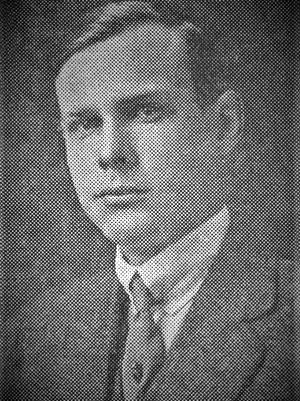
Stuart Woman’s Club, which held its first official meeting on Friday, Oct. 24, 1913, played an important role, aiming to make the community better in every way. The Club beautified the circle near the Lyric theatre. In June 2016, The Stuart Times reported that “some person or persons stole twenty-two plants from the circle.

With an increase in the town’s population and due to the building’s limited size, a second, larger theater was constructed. By early 1917, architect’s plans and specifications had been submitted and approved, with local builder Sam Matthews being contracted for the job. It was to be located on Railroad Avenue (Flagler) behind the post office and near the Sanitary Market. The block foundation was laid and the framework begun as the building started to take shape within view of the passing trains. Judge Hancock stated that he would have preferred the structure be of concrete, but due to building conditions and costs at the time, it would instead be constructed of wood. The completed theater was considered one of the nicest on the East Coast. Hancock sold the original theater on Osceola to a church soon after being vacated.
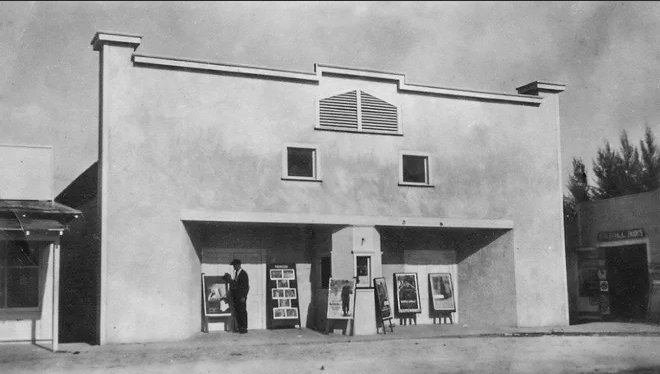
A kind, respected businessman, Fred was a man with many talents or interests, one being photography.
During the Great War, he served as a private with the Air Service, Photographic Section, returning to town after military service in December 1918, to manage the second Lyric Theatre.

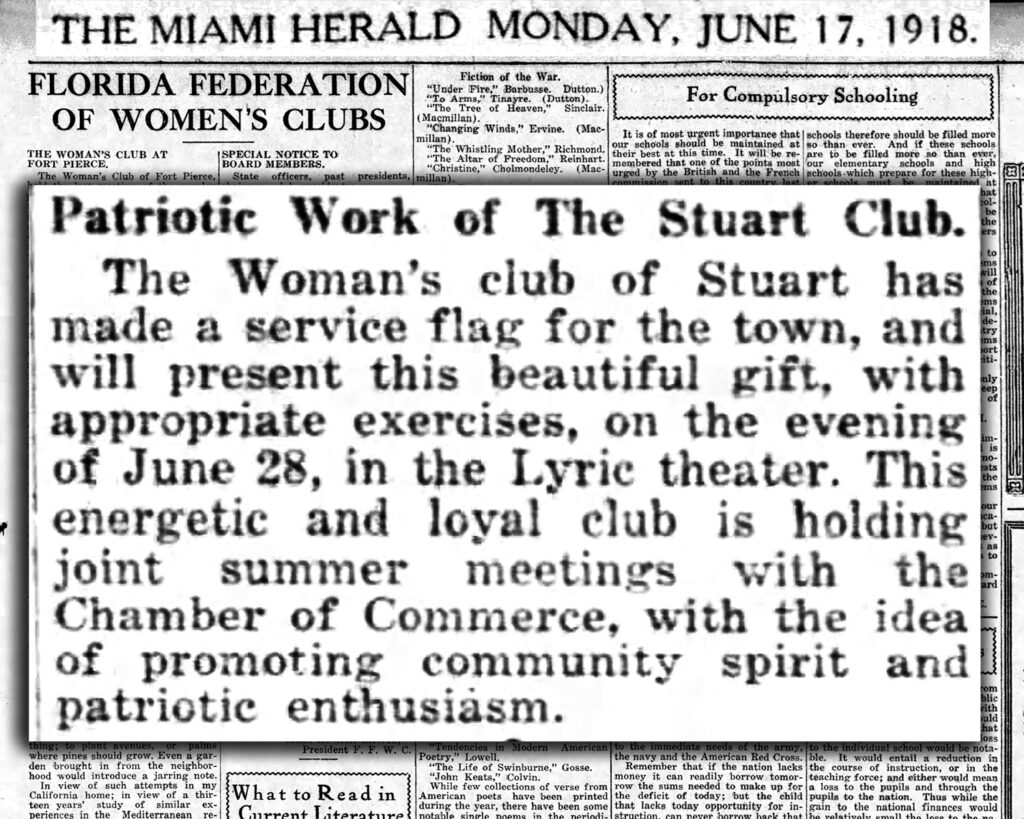
As a member of the Stuart Mozart Music Club, originally organized by mother Mammie, Fred was also known for an ability to play musical instruments and for singing. He had joined the new local American Legion organization on June 1, 1919 and in March 1920 was a member of the Stuart Band.
The theater business was profitable and by 1925, during the Florida land boom years, plans were made for a third, even larger building, the grandest of all, estimated to cost about $100,000.

Contractor Fred Walton moved the second theater building to the east side of Osceola to provide space for the third Lyric on Flagler, a concrete modified Spanish Mediterranean style tile and stucco structure.
That relocated wooden building of the second theatre would be used for many purposes, including lease for Dirr’s bowling alley in 1931 and eventually purchased from Hancock by the City, supposedly for a Stuart Recreation Hall. The structure was condemned in 1936 and demolished, the lumber salvaged for other town projects, one being a bandstand in Flagler Park.

The third Lyric opened on March 15, 1926 to large, enthusiastic crowds, exceeding the 1,000-plus seating capacity, some attendees even were turned away! “Skinner’s Dress Suit,” starring Reginald Denny was the first movie to be shown.

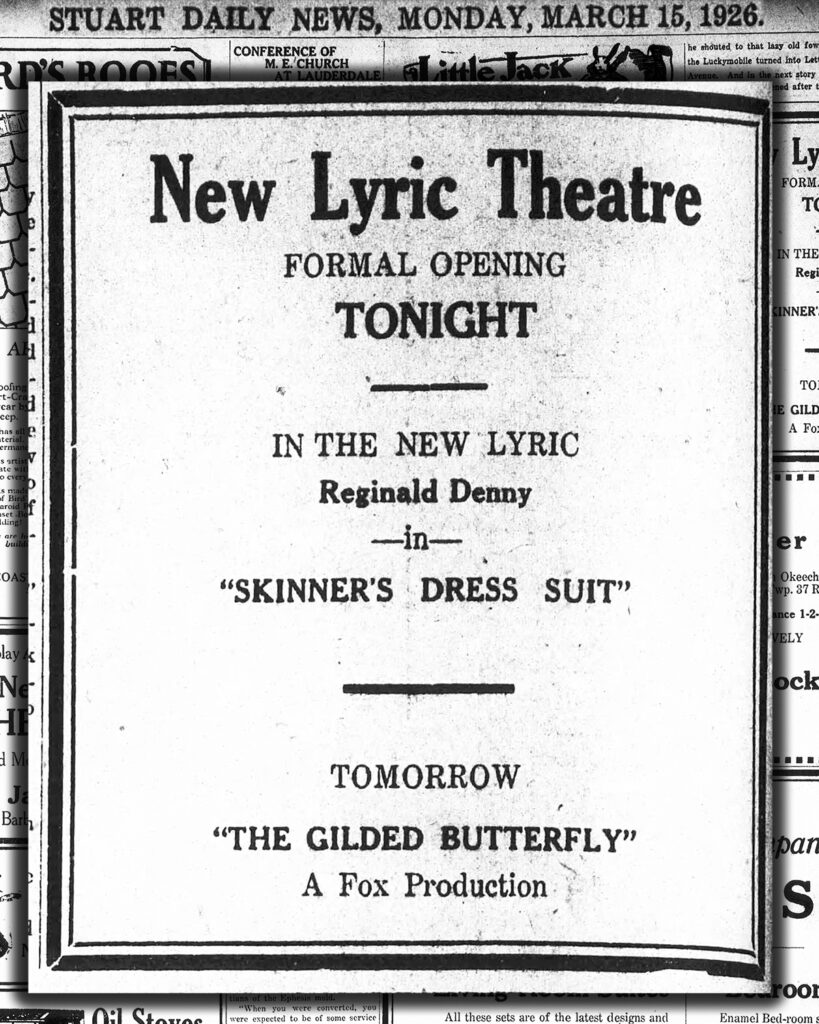

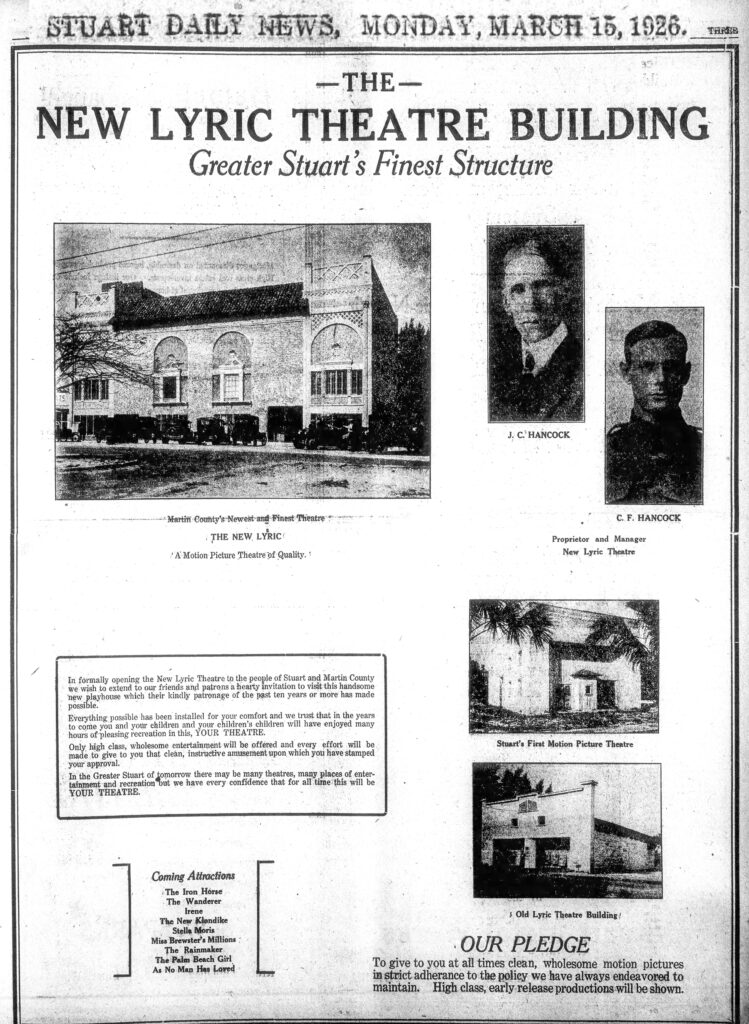
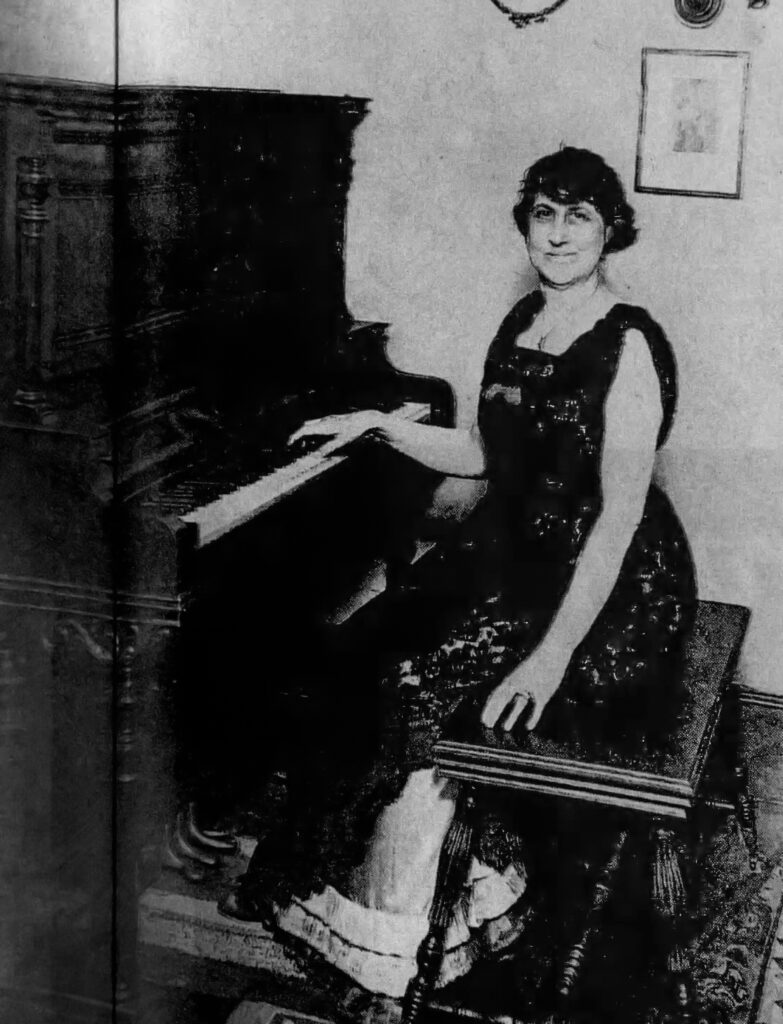
Photo: Mamie Hancock, a graduate of the Cincinnati College of Music, at the $12,000 pump organ installed in the “new” Lyric in 1926. She provided musical accompaniment for the silent films.

Only a few years after its construction, in August 1928, a hurricane caused excessive damage to the Lyric on Flagler, amounting to about $10,000, with no insurance coverage.
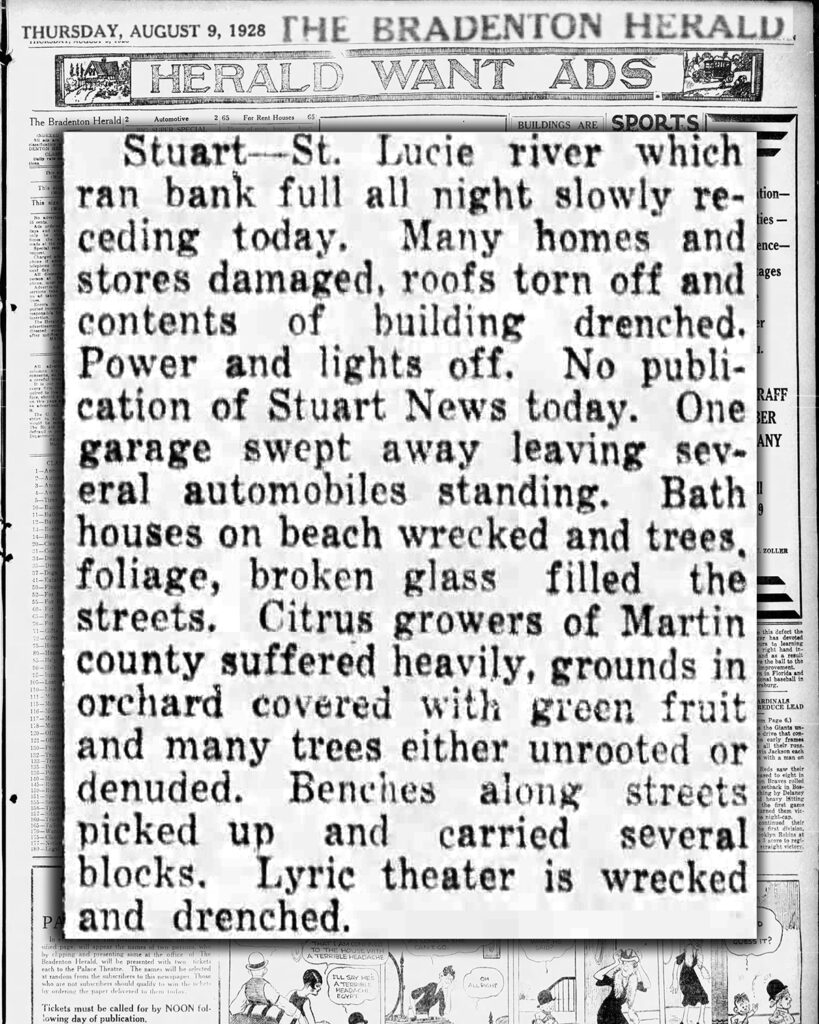
More than half the roof was blown off, causing the theater seats to be drenched with continuous rain, most ruined or damaged. The organ, costing several thousand dollars, would require an expert repairman.
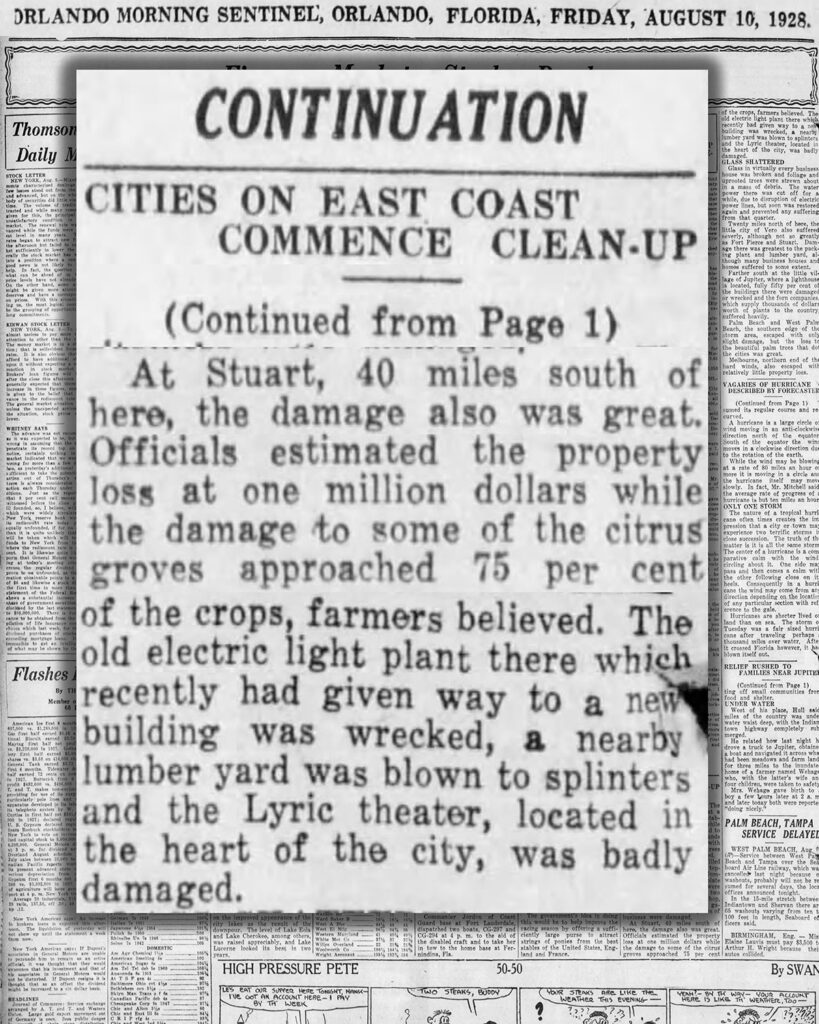
After the storm, Hancock stated that he would take the time necessary to make all the theater repairs correctly, but was not able to venture a guess as to when Stuart would again have moving picture entertainment.
Tragically, only five weeks later another devastating hurricane Sept. 16, tore off the roof over the stage. A considerable section of the upper tiling hurled onto the roof of Owen’s 5 Cents to $1 store, almost completely demolishing that building. Both the stage of the theater and the interior of the store were tangled masses of wreckage.
Unbelievably, a few days later, Wednesday evening, Sept. 20, Fred Hancock, Stuart’s determined theater manager, actually presented a show for the community.
The great pipe organ was mute and the stage behind the silver screen in shambles, but the event was a success. It reminded one of the circus watchwords, “Whatever happens, the show must go on.” There was no power until 11:25 p.m., but Fred had an emergency electric generating plant that he used that evening. He even presented another show, Saturday, Sept. 23.
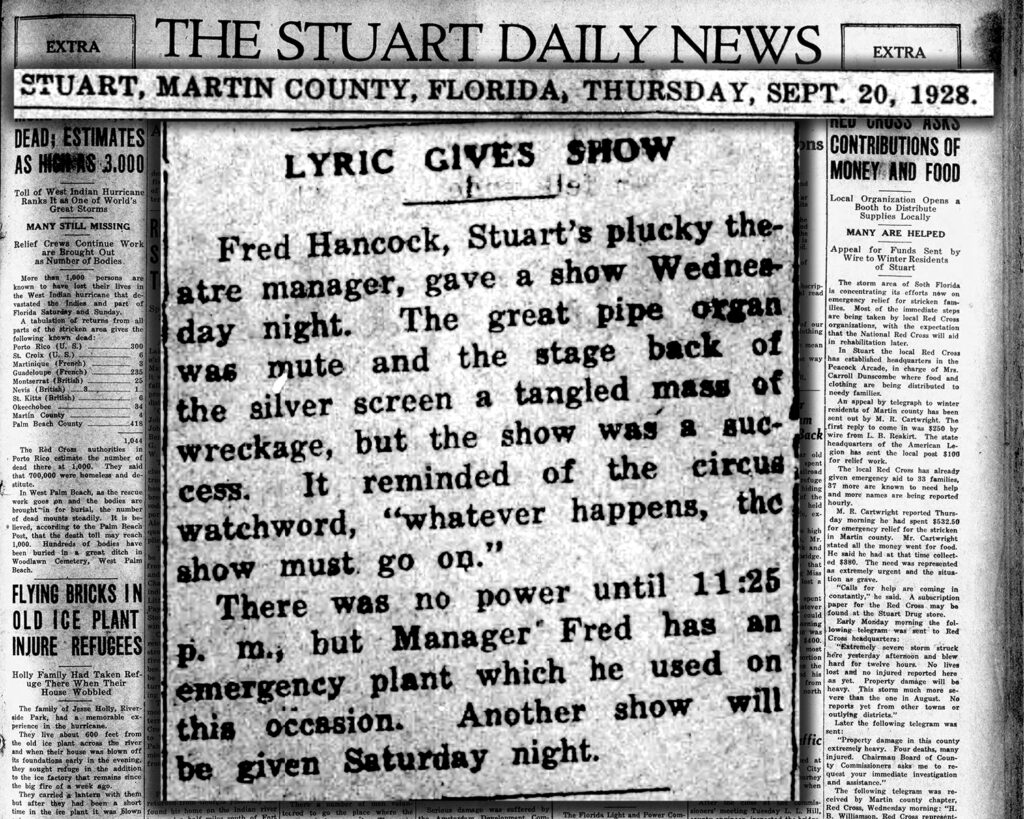
Interestingly, the theater’s blue stage curtains, soaked and streaked by rain water due to the roof’s damage and no longer usable, were nevertheless salvaged by frugal Mammie. She tore the curtains into strips and made several rag rugs.
Although the Lyric suffered severe damage in the storms of 1928, repairs were made with Fred Hancock’s able direction and management of theater operations. He was a well known and liked businessman, a friend to the townspeople.
Generous nature
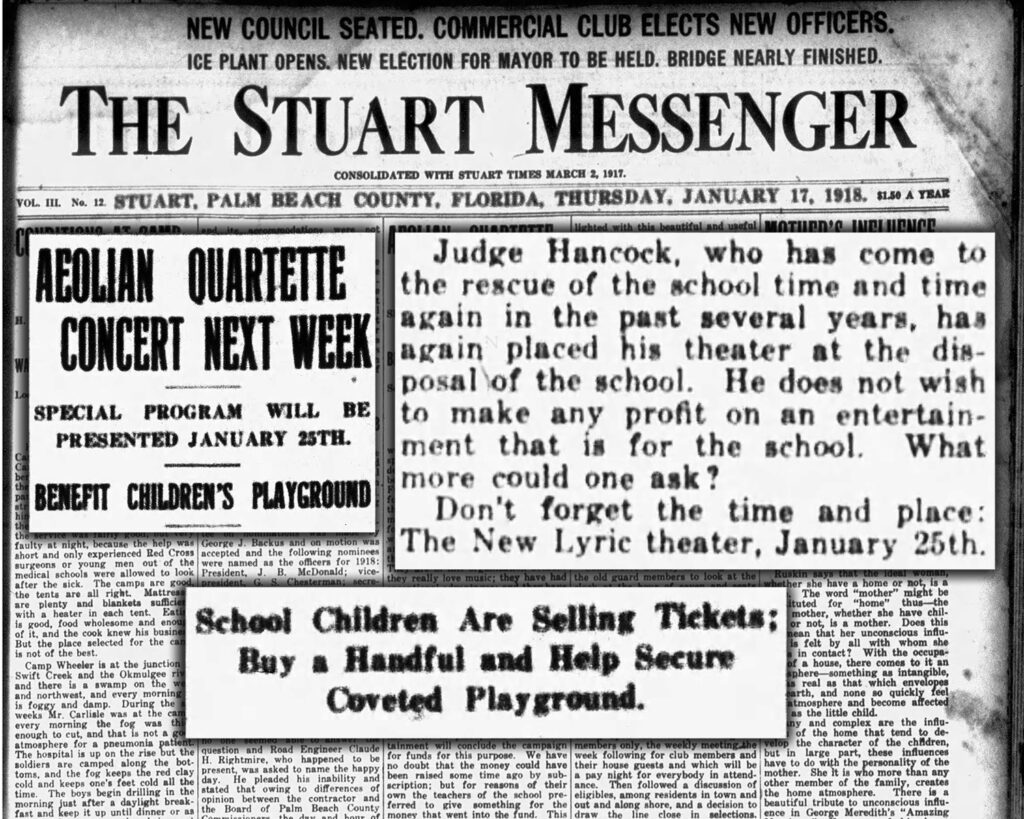
Fred’s kindness and generosity were evident in the community, an example being an incident involving the young Rue girls in the late ‘20s, whose grandparents owned a sweet shop near the theater on Flagler.
When downtown with their parents, who assisted at the shop, the two girls, usually bored having little to do, would often sneak into the theater through the back entrance and ascend the stairs to the balcony section, sitting on the top step to view the movie.
Fred noticed the situation and told the mischievous youngsters’ parents that the children need not sneak in, but rather come to the main entrance for admission to see the show for free.
The act of kindness, greatly appreciated, kept the girls safely occupied.
Years later, in June 1935, during the Great Depression, an idea sponsored by the Stuart Rotary Club in cooperation with Fred Hancock in another act of generosity, would offer reduced-price matinees at the Lyric to be inaugurated on Saturdays during the summer.

The 10-cent afternoon movies for children and half-price 20 cents admission for adults, provided amusement for many youngsters who would otherwise be unable to see a show.
Fred arranged a special program that first Saturday for the children, which included two cartoons, “Scrappy” and “Kittens,” with an educational travel picture, “In Allah Land,” preceding the feature film, “Eight Bells,” a sea story starring Ann Sothern and Ralph Bellamy.

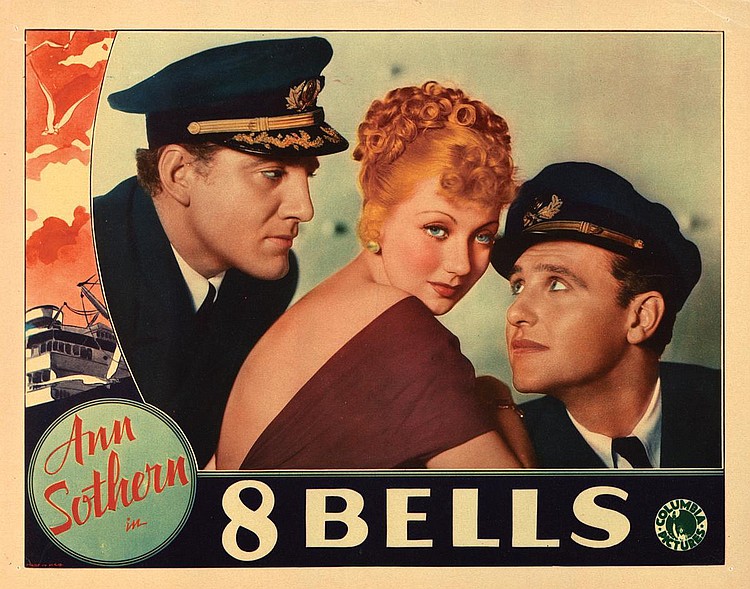
Unfortunately the Hancocks had to sell the Lyric in 1937, purchased by Eastern Enterprises, Inc, a division of the Sparks theater chain, who leased the premises in Stuart.
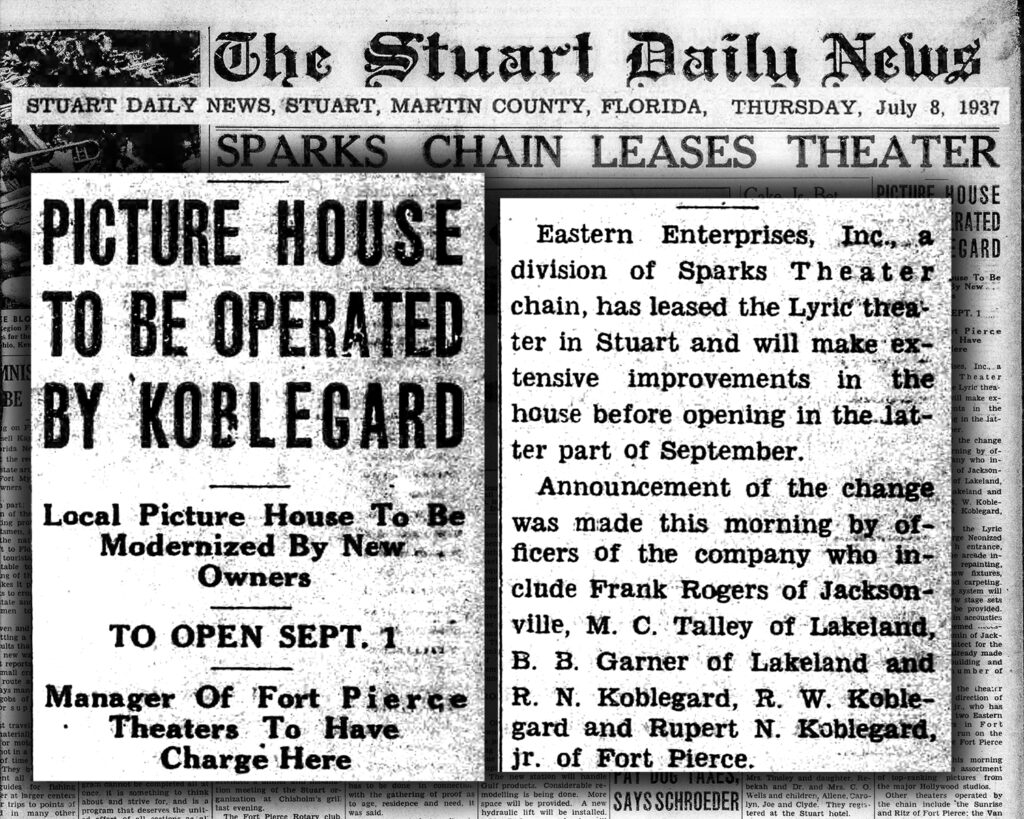
Fred had ably managed the three theaters from 1914 through Aug. 30, 1937, except for an 8-month period in 1918 when he was in the U.S. Army during the Great War.

Hancock’s Newsstand
Fred Hancock, a relatively young man in ‘37, would soon own another business in town on Osceola called City News Stand and Telegraph Office.
By the 1950s and ‘60s, Fred’s small shop at 112 Osceola Ave. was known simply as Hancock’s Newsstand, located at one time between Harry Lowe’s Shoe Repair Shop and Gay’s Jewelry & Gifts.
He sold primarily newspapers, magazines ranging from children’s comics to adult publications, with a small selection of paperback books and a few other items, including candy, even a bubble gum machine as a treat for the youngsters.
In later years, installation of a simple but innovative device with ‘electric eye’ light beam at the front entrance door audibly signaled when a customer entered the shop.
Magazines were displayed on shelves or counters against the three interior walls and a central large table with Fred often reading while sitting on a stool behind a glass display case, where customers paid for merchandise.
The storefront on Osceola featured a large plate glass window. A curtained doorway separated a storage room in the rear of the shop where Hancock could enjoy a few comforts of home and prepare a meal on a small stove.
The decor remained basically unchanged for years.
Family’s riverfront home

The Hancocks had built a beautiful riverfront home at the turn of the 20th century, 401 Atlanta Ave., Stuart. It would be the family home for John, Mamie and son, Fred, eventually to be occupied by Fred, wife Ethel ‘Billie’ G. Crandall and three daughters Patricia Hancock Benson, Gloria Hancock Woodham and Dorothy ‘Doris’ Hancock Woodham.
Fred’s mother, Mamie had died in January 1948, and father ‘Judge’ John C., a few months later, April 22, 1948.
Fred’s shop was closed in the 1970s, he and Ethel moving to Albuquerque, New Mexico. She was born Sept. 5, 1892 in Massachusetts and died in November, 1977 in New Mexico.
Fred, a resident of Stuart from 1902-1975, died in New Mexico in May 1983, at age 89. He, wife Ethel, parents John and Mamie are buried at All Saints Cemetery.
Examples of Hancock’s photography, including a photo collection on glass plates and negatives, was obtained and preserved by Art Ruhnke of Stuart.
The vintage Hancock home still remains on Atlanta Avenue, overlooking the St. Lucie River
In 1978, the Lyric was purchased by the New Life In Christ Church. By 1987, the church wanted to move, and there was talk of knocking down the theatre to make room for new offices and shops. Realtor Roy Laycock pulled together a group of concerned citizens to save the building, and they bought the landmark. The Friends of Lyric received not-for-profit status in January 1989.
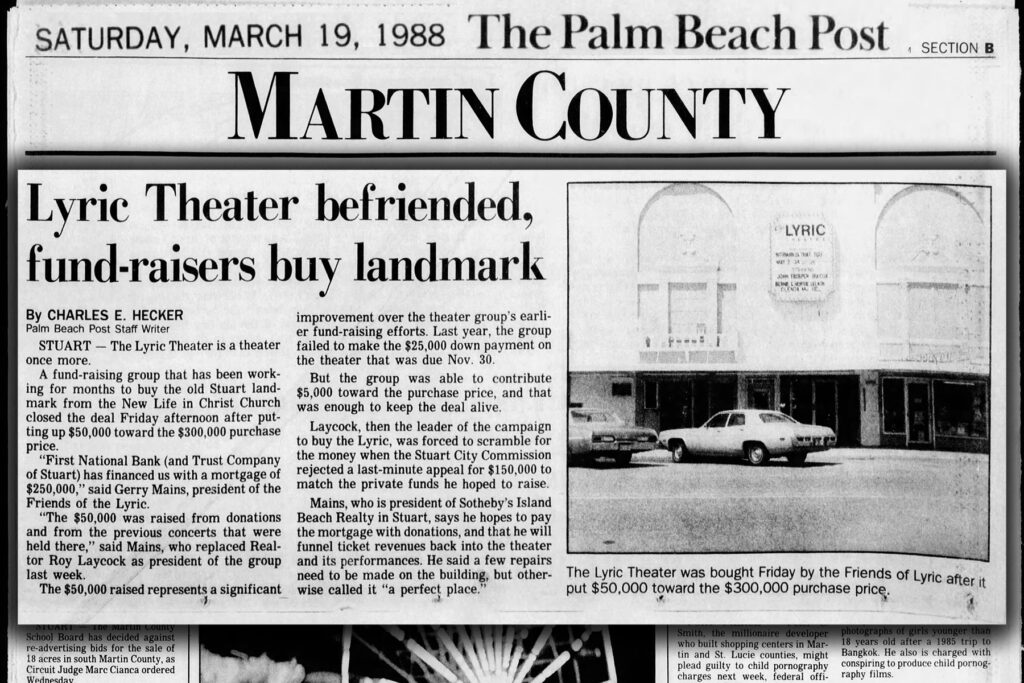
The 1895 Church of StuArt is a historical building of the first community church, also known as the Pioneer Church (the oldest church building in Martin County), built in Stuart in 1895! Your donations help us maintain, restore, and preserve the building, and also continue our research and share historical information and articles. We greatly appreciate your support! The donations are not tax deductible.
Stop by our historical church, enjoy the building’s history tour and fine art. The sale proceeds benefit the building’s maintenance and restoration.


